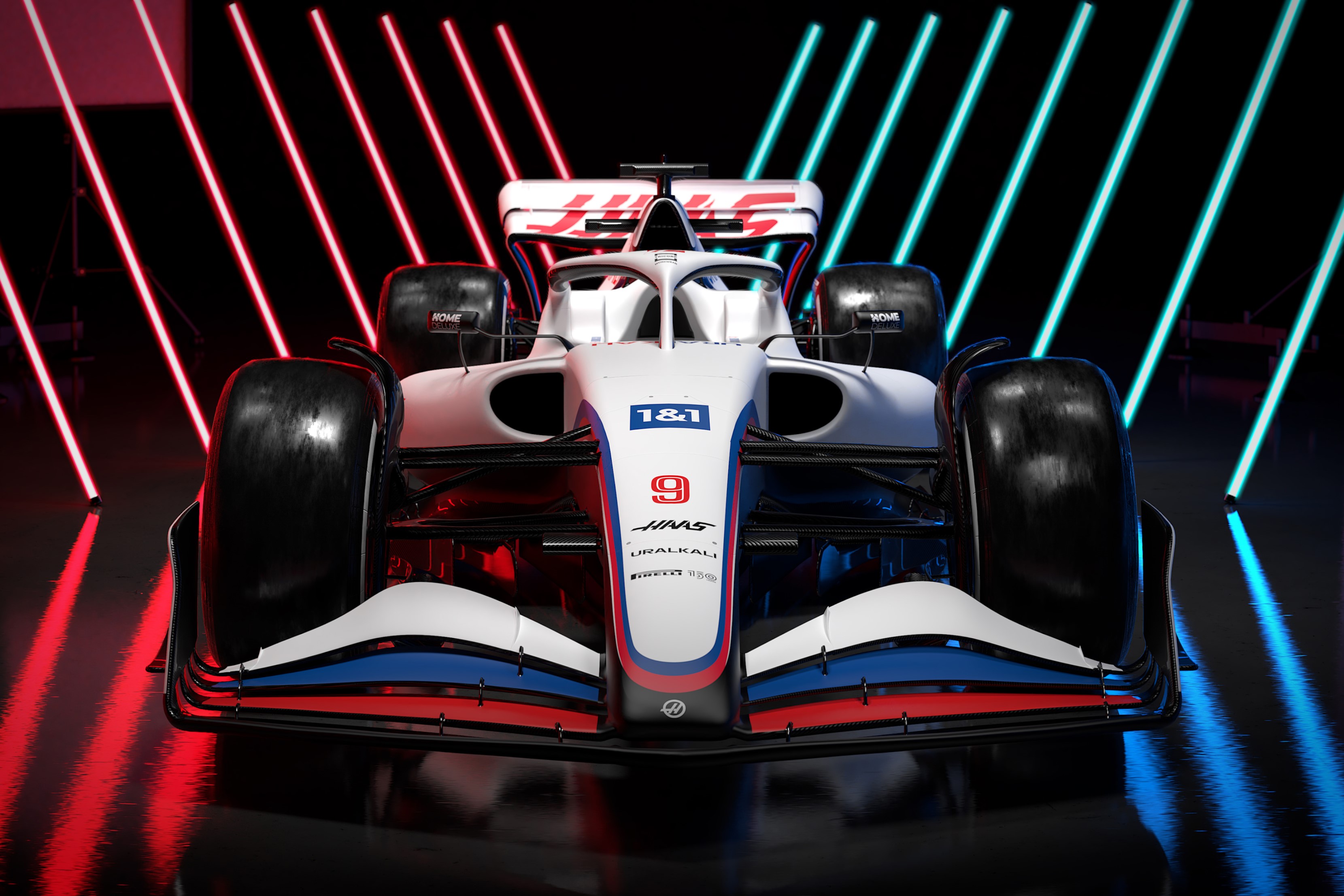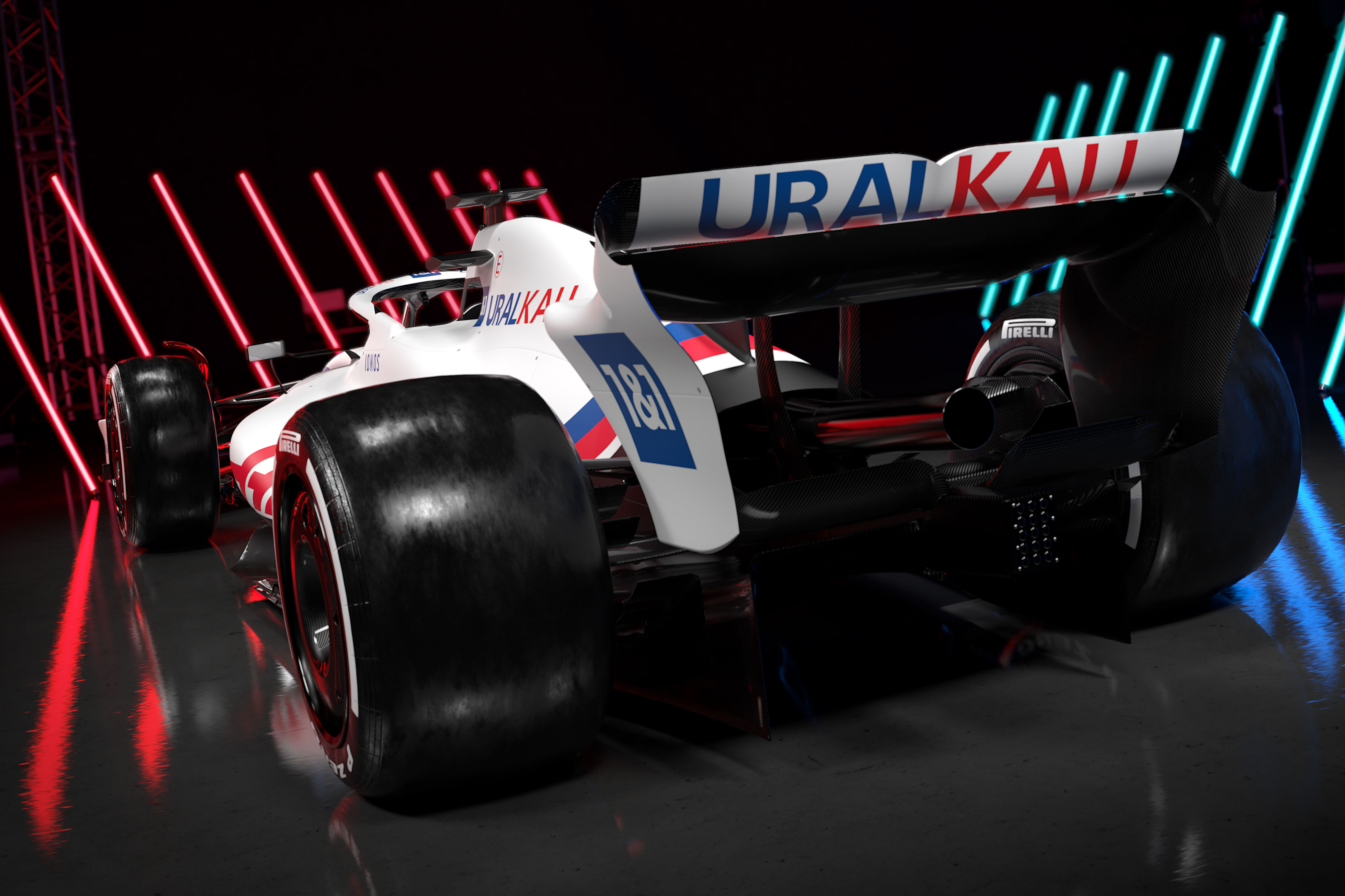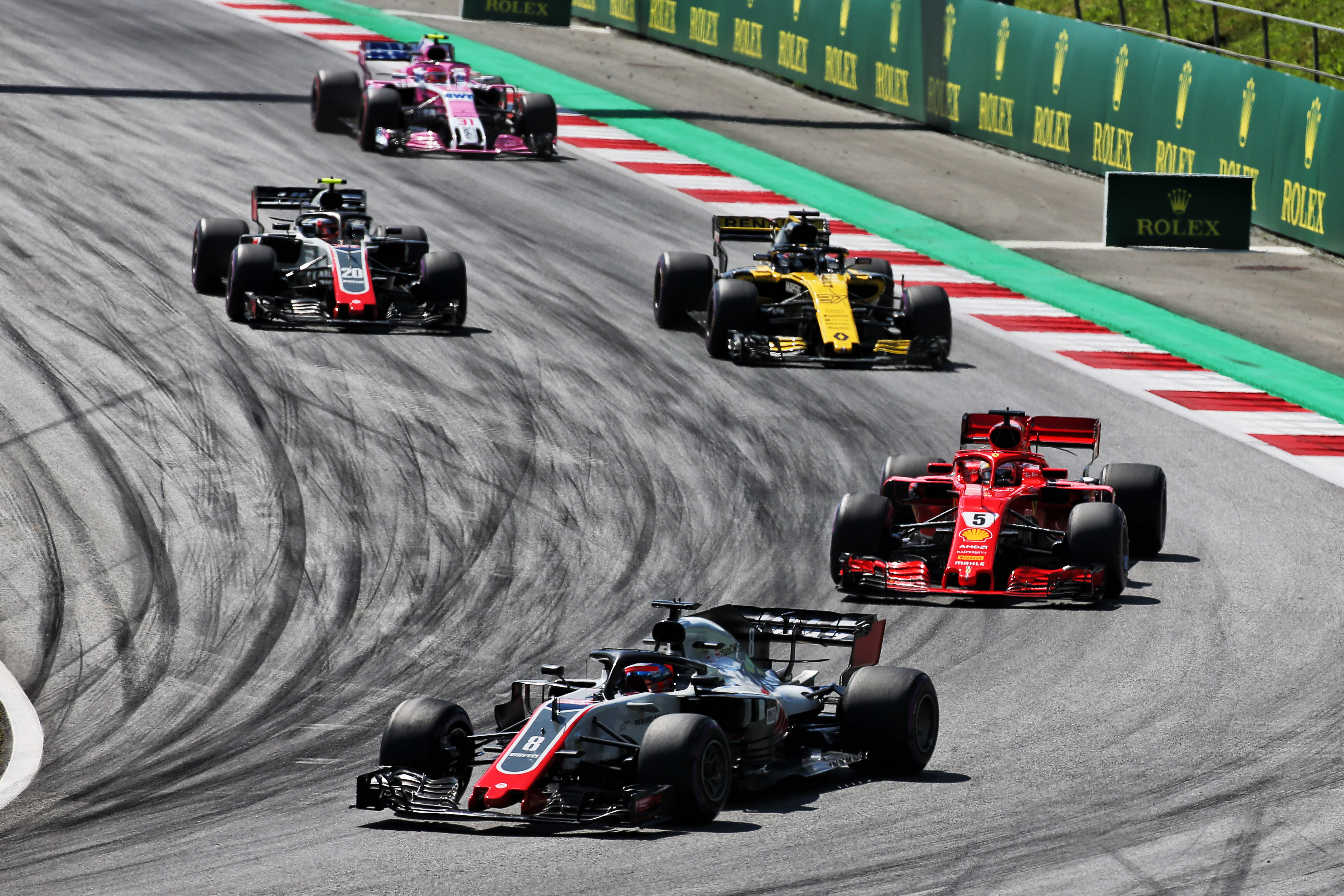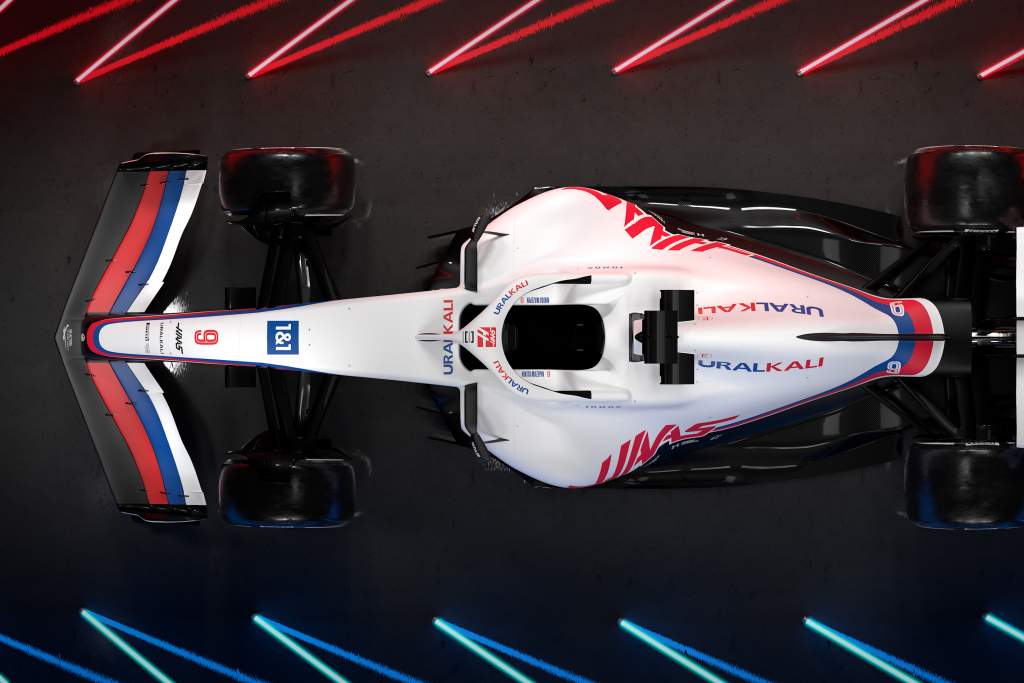Up Next

Haas is the first team to reveal a 2022 Formula 1 car. We know this is not by any means the finished product that will hit the track in testing later this month, and Haas will push hard through the year to get itself firmly into the middle of the pack, but while Haas described this as a livery launch we do know these images are based on the real design.
At first glance, it’s a good example of what the design manual produced by F1 and the FIA was intended to create. Before we can comment on the wider trends, we need to see some more cars to see if anyone has been able to go a little more off piste.
So let s break down some of the details. The front wing endplates all flow into one, with the slot gaps continuing around the lower outer corner, as prescribed by the rules.

The wing flap profile itself is more acute than on the F1 show car. This will mean that the flow coming off the trailing edge of the rear flap will be heading for a more defined location on the leading edge of the sidepods – meaning that it can be managed that little bit better.
The nose shape is very simple with no trick undercuts or turning vanes like we have seen in the past. This is what the regulations intended and that is what we have got.
The front suspension on this release is pushrod, which appears to be a departure from what technical partner Ferrari is doing with its expected pullrod design. The lower wishbone is mounted very high at around the front-wheel centre.
It looks like the pushrod goes directly to the outer end of the wishbone, meaning that the pushrod angle to horizontal is very low. If this is for real it puts very high loads into all of the suspension components.

I’ll be interested to see whether this really is the front suspension configuration on the car when it comes to testing. If you look at where the pushrod meets the chassis, it doesn’t seem to enter the chassis, it seems to be just leaning against it. So it’s possible Haas might not want to give away the real Ferrari design in this area until Ferrari releases it. Let’s wait and see.
The radiator inlets and underfloor leading edge are now much simpler as the multi-element bargeboards are gone. Haas still retains some small turning vanes, but these are minuscule compared to what we have seen in the past.
The underfloor inlet is much higher than in the past, and narrower than the F1 show car. It has similar vertical vanes to optimise the inlet flow and separate it for the front tyre wake. The radiator inlet ducts are also narrower than we have become used to. They are quite small in open area too but to compensate for that they are in a very clean area for airflow.

As is the norm for many years now the sidepod shape itself is tightly packaged around the components underneath it. The sidepods also sweep downwards much more aggressively than the show car. This is to get as much airflow inside the rear tyres as possible to help the performance of the rear wing.
The rear bodywork is also quite compact around the gearbox, so again not as large a radiator exit area as we have seen in the past. This gives more room between the sides of this bodywork and the inside of the rear wheel and will allow more high-speed airflow through this area and over the top of the diffuser s upper surface.
This should improve the performance of the diffuser and rear beam wing but it might be a component that needs to change when we get to high temperature venues.

At the rear, Haas has retained the pullrod rear suspension design. The rear wing, like the front wing, is as defined by the regulations. All of the surfaces blend together to reduce the vortices and the turbulence interfering with the following car. Either it s very well hidden or Haas doesn’t have a DRS system on this version, but pretty sure it will rear its ugly head before we go racing.
Overall, beyond some of the smaller details I’ve already mentioned I’m not seeing anything too dramatically different from the show car that F1 and the FIA presented at last year’s British Grand Prix. Either the regulations are so prescriptive that this is the only thing that is possible, or Haas still has something up its sleeve to introduce before the first race.
Either way, I’m a bit disappointed. I thought we might see cars that were a little bit more adventurous. But hopefully we will see more variations on the theme than what Haas has created.
And this is not the definitive Haas, so it’s likely there will be some hidden details that turn out to be on the real car. It’s also worth noting that as it has been a back of the grid team, it isn’t the team you’d necessarily expect to push the boundaries the most aggressively so there could be plenty more to come.
As for the team itself, I’m pretty sure I’m going to say ‘this is a big year for x’ every time a new car is launched. But this is for different reasons from team to team.

For Haas, it’s all about getting itself back to where it was in 2018, when it finished fifth in the constructors’ championship and was a strong midfielder. Last year, it didn’t look like a team that was going anywhere, but the investment – or lack of investment – in 2021 could just have been a shrewd move and should allow it to spend just that little bit more on its 2022 car.
In Nikita Mazepin and Mick Schumacher, Haas has two drivers with a tough year of F1 experience behind them. The father of one of those drivers has invested heavily financially, while the other has the might of Ferrari behind him.
The team’s Ferrari ties have led to Haas setting up its own design studio at Maranello, staffed with Haas personnel but, significantly, a lot of them effectively seconded from Ferrari.
Simon Resta, who joined Haas as technical director last year, has a huge amount of experience – especially Ferrari experience. As Haas is using as many parts as it can from Ferrari, he is the ideal person to pull this relationship together.
Dallara is still involved, but more on the production side of things, so I don’t think we should underestimate the potential Haas now has.
As far as design is concerned Haas has its own people, they are driven by Ferrari, backed up by Dallara, with the race team running from the UK in Banbury. That makes it a strong package with input coming from multiple directions.
Haas now just has to show it can react to where it stands when the season starts. In the past, Haas sometimes appeared not to get a good hold of a situation when it hit problems, leading to it heading downhill.
Given the rate of development of these new cars, that’s something it must avoid this year.





